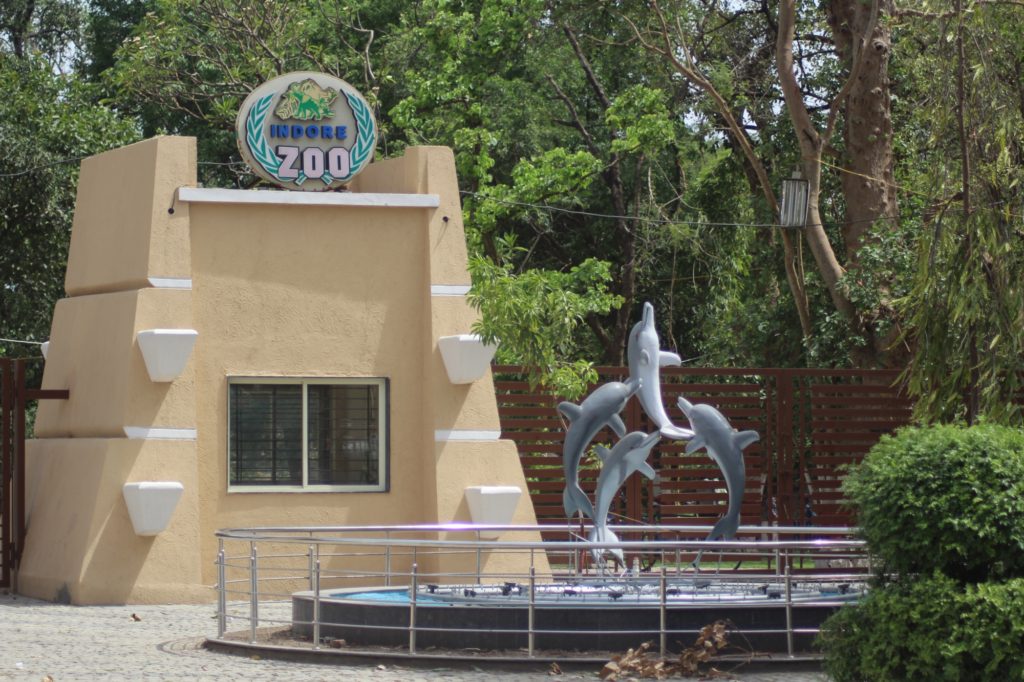Kamla Nehru Zoological Park in Indore
Have you ever been caught up in a dilemma deciding between whether a zoo is built for an educational purpose or solely with intent for entertainment? I only remember visiting a zoo as a child, and today, after 25 years, I toured one because it was right next to an art museum I had planned on visiting. Anchored near Central Museum in Indore, Kamla Nehru zoological park (Indore Zoo) is a 19th-century zoological garden sprawling across 51-acres of Quadibag.
This recently-renovated zoo is about 5 km from the city centre, and many find it a great place to spot rare wildlife. It is also the largest and the oldest zoological garden in MP. Judging by their behaviour, I wasn’t convinced that these people were here to learn about an animal. Although, the children appeared more disciplined than the parents as they were in that early awe of observing animal behaviour that they don’t get to see every day. But, when an animal is in a zoo, is there anything left to learn?

Animals living in a captivated environment are ‘mostly’ sad and lonely, and the energy they pass on to their viewers is equally saddening. With that thought on my mind, I rambled by the slender lanes inside Kamla Nehru Prani Sangrahalaya – each side overran with a caged habitat. I spotted Pekin ducks, white peacocks, bears, lions, tigers and many more wildlife species.

The official records tell, that Kamla Nehru Zoo is home to 56 animal species, including 28 beautiful bird species, seven types of reptiles and herbivores, four felids & canids and six varieties of omnivore mammals. In the last 12 years, the Indore zoo has only brought in seven new species. This zoological park also aids the in-house breeding of royal Bengal tigers, white peacocks and Himalayan bears.

To beat the scorching heat, few sloth bears were climbing a tree or resting on the roofed terrace of their habitation. There is only one female Himalayan Bear in Indore Zoo, and while I was visiting, she was unwell and hence kept away from others. This local attraction also allowed me to observe blackbucks and turkeys relaxing in a large ground-like grassy area.

I had never seen a Nilgai (blue antelope) before, so sure, that was exciting! However, despite its all-embracing wildlife collection, Indore Zoo lacks warmth. The zoo could surely use a few more CCTV cameras to keep a check on the ill-mannered visitors. (Or rather, ill-mannered men!) That aside, I like that the zoo management has recreated natural habitat for tigers, lions and large animals alike. The monkeys and similar-sized animals are confined to dilapidated cages.

Indore zoo also has an on-site food court with small stalls where you can buy pocket-friendly snacks and beverages. I couldn’t bring myself to appreciate the poor hygiene maintained in this area, so I will skip recommending it. Eat and drink at your own risk! My takeaway: People (often residents) do not think about animals when visiting this zoo rather, they are here for a picnic, to have a nice day with family.

There are no guides to talk about animals or explain their existence. If the zoo is an educational tool in actuality, it would explain how these animals survive far from home. Though, no one looked fretted about how animals feel when made to live in an unnatural habitat in unnatural climates. I think our future generations can benefit more from watching a wildlife documentary than visiting a zoo.






interesting information about wild life